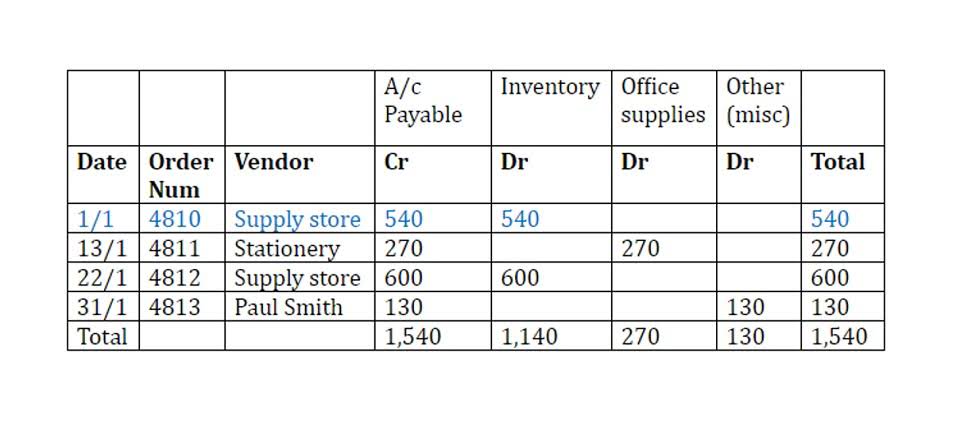Certified Public Accountant: What Is A CPA?
Content
Statistical measure of the degree to which an individual value in a probability distribution tends to vary from the mean of the distribution. Statements issued by the AMERICAN INSTITUTE OF CERTIFIED PUBLIC ACCOUNTANTS (AICPA) that specifically relate to REVIEWS and COMPILATIONS. Difference between two prices, usually a buying and selling price. Transfer of all, or a portion of, a subsidiary’s stock or other ASSETS to the stockholders of its PARENT COMPANYon a PRO RATA basis.

Right to buy or sell something at a specified price during a specified time period. MUTUAL FUND that does not have a fixed number of shares outstanding, offers new shares to the public, and buys back outstanding shares at market value. Price per share at which a new or secondary distribution of securities is offered How Much Do Bookkeeping Services for Small Businesses Cost? for sale to the public. Value assigned to ASSETS or LIABILITIES that is not based on cost or market (e.g., the value of a service not yet rendered). An incorporated organization which exists for educational or charitable purposes, and from which its shareholders or trustees do not benefit financially.
Moving Average Method
Arrangement to provide funding to replace existing financing, the most common being a refinance of a home MORTGAGE. A red herring is not an offer to sell or the solicitation of an offer to buy. Comparison of two numbers to demonstrate the basis for the difference between them. Downturn in economic activity, defined by many economists as at least two consecutive quarters of decline in a country’s gross national product. An entity that holds a fixed pool of mortgages and issues multiple classes of interests in itself to investors.
What is a CPA in America?
A certified public accountant (CPA) is a designation provided to licensed accounting professionals. The CPA license is provided by the Board of Accountancy for each state. The American Institute of Certified Public Accountants (AICPA) provides resources on obtaining the license.
It came about from discussions between the AICPA, other accounting representatives and the SEC. Activities that relate to offering a private company’s shares to the general investing public including registering with the SEC. Conventions, rules, and procedures necessary to define accepted accounting practice at a particular time. https://kelleysbookkeeping.com/law-firm-accounting-the-ultimate-guide/ The highest level of such principles are set by the FINANCIAL ACCOUNTING STANDARDS BOARD (FASB). A balance sheet that projects the financial position of a business for a future period. The ability to increase earnings for stockholders by earning more on ASSETS than is paid in INTEREST on DEBTincurred to finance the assets.
Market Price
Method used in evaluating investments whereby the net present value of all CASH outflows and cash inflows is calculated using a given DISCOUNT RATE, usually required rate of return. DEBT SECURITIES issued by companies with higher than normal credit risk. Considered “non-investment grade” bonds, these SECURITIES ordinarily yield a higher rate of interest to compensate for the additional risk. A ratio used to indicate the number of times a COMPANY’s average inventory is sold during an accounting period. A professional organization made up primarily of management accountants.

Not all accountants are CPAs (certified public accountants), but all CPAs are accountants. Typically, an accountant has achieved a bachelor’s degree in accounting. A certified public accountant earns this designation after completing specific educational and work requirements and passing a CPA exam. Acquiring your certified public accountant license takes time, patience and planning. Being a CPA also takes a commitment to continuing education even after earning your CPA designation.
Debt-to-Equity Ratio
The written record of the basis for the AUDITOR’s conclusions that provides the support for the auditor’s representations, whether those representations are contained in the auditor’s report or otherwise. Fund consisting of ASSETS where the holder agrees to remit the assets, income from the assets, or both, to a specified beneficiary in due course or at a specified time. Company, or other organization related through common ownership, common control of management or owners, or through some other control mechanism, such as a long-term LEASE.
All states require some level of accounting education to become a licensed CPA. In most states, this includes 150 credit hours in college-level accounting courses. Some CPA accounting candidates complete this requirement as undergraduate students. While a master’s degree is not specifically needed to meet the educational requirement, some of the 150 credit hour programs lead to a graduate degree. If you’re trying to decide whether a graduate degree is right for you, read about a Becker student’s experience pursuing a master’s in accounting.
SEC Registration Statement
A business that is treated as distinct from its creditors, customers, and owners. Grouping of expenses reported on a company’s PROFIT and LOSS statement between COST OF GOODS SOLDand INCOME deductions. Legal interest of one person in the property of another to assure performance of a second person under a contract. EXCHANGES and OVER-THE-COUNTER markets where securities are bought and sold subsequent to original issuance, which took place in the primary MARKET. U.S. government BOND issued in face value denominations ranging from $50 to $10,000. Concept in statutes and regulations whereby a person who meets listed requirements will be preserved from adverse legal action.


Ответить
Want to join the discussion?Feel free to contribute!